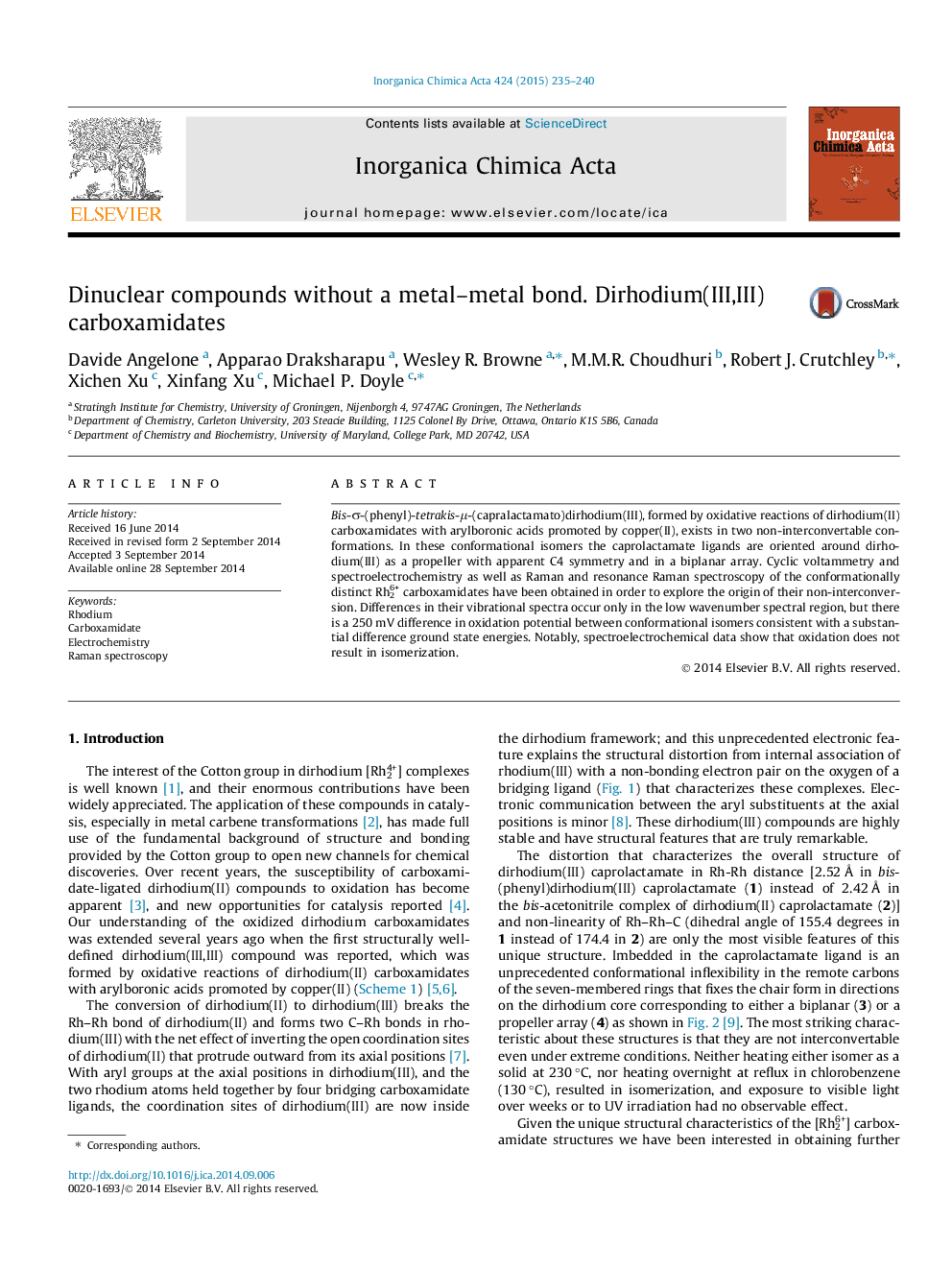| Article ID | Journal | Published Year | Pages | File Type |
|---|---|---|---|---|
| 1312156 | Inorganica Chimica Acta | 2015 | 6 Pages |
•Two dirhodium carboxamidates conformational isomers show remarkable thermal stability towards their interconversion.•The two isomers show negligible differences in their vibrational and electronic absorption spectra.•The two isomers show substantial differences in their oxidation potentials.•The dirhodium complexes are stereochemically stable in several oxidation states.
Bis-σ-(phenyl)-tetrakis-μ-(capralactamato)dirhodium(III), formed by oxidative reactions of dirhodium(II) carboxamidates with arylboronic acids promoted by copper(II), exists in two non-interconvertable conformations. In these conformational isomers the caprolactamate ligands are oriented around dirhodium(III) as a propeller with apparent C4 symmetry and in a biplanar array. Cyclic voltammetry and spectroelectrochemistry as well as Raman and resonance Raman spectroscopy of the conformationally distinct Rh26+ carboxamidates have been obtained in order to explore the origin of their non-interconversion. Differences in their vibrational spectra occur only in the low wavenumber spectral region, but there is a 250 mV difference in oxidation potential between conformational isomers consistent with a substantial difference ground state energies. Notably, spectroelectrochemical data show that oxidation does not result in isomerization.
Graphical abstractTwo thermally stable conformational isomers of a bisphenyldirhodiumcarboxamidate show negligible differences in their vibrational and electronic absorption spectra but substantial differences in their oxidation potentials.Figure optionsDownload full-size imageDownload as PowerPoint slide
